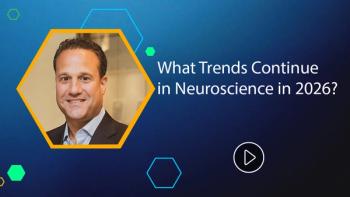
What Do Pharma's "High Performers" Have in Common?
A study of high-performing pharma companies reveals science-based innovation strategies and patient-outcome-based commercial models are now the key drivers of growth.
A new study of high-performing pharma companies reveals science-based innovation strategies and patient-outcome-based commercial models are now the key drivers of growth. Anne O’Riordan reports.
A select group of high performing pharma companies are significantly breaking away from the pack in terms of high performance in profitability, growth, future value, consistency and longevity, according to recent biopharmaceutical high performance business research. These high performing pharma companies are able to achieve this by focusing on innovation-driven growth strategies that are substantiated by patient- outcome-focused commercial models.
The research looked at the long-term performance of pure play pharma companies — those that have more than 75 per cent of their revenue derived from pharma products.
In contrast to similar research published last year, the new study found that while good product pipeline and penetration in emerging markets is still driving market growth, investor sentiment has shifted and science-based innovation strategies and patient-outcome-based commercial models are now the key drivers of growth.
In an environment where generic options continue to proliferate, payers continue to be more constrained in their reimbursement policies and the proof of outcomes and results that are being demanded by them. The research reveals that companies focusing on the right growth strategies and products that are being brought to market with the right level of disease focus are appreciated by reimbursers and patients.
The analysis identified four key take-aways:
1. There is clear evidence of continued recovery in industry performance. The research shows a continued recovery in the first ten months of 2013 with enterprise value (1) up 14 per cent and reaching 11 per cent above the pre-recession peak of 2006. However, there is a wide range of performance between individual companies.
2. Some companies are breaking away from the pack through science-based innovation strategies: Several high performing companies have faster average growth forecasts than their peer group, largely driven by recent and upcoming product launches, based upon scientific innovations versus truly diversified strategies.
3. High performers are putting science back into life sciences: Many of the high performers are outperforming the averages for the rest of the peer group on three key forward-looking metrics — a higher replacement revenue ratio forecast, higher five-year forecast revenue growth average and a higher proportion of forecast growth from new product when compared with averages for the rest of the peer group.
4. High performers are leading the industry's pivot to the patient: High performers have been able to bring new products to market with a clear articulated view on how the drugs improve patient outcomes and are consequently able to carve out a unique place in today’s price and value-conscious health market.
Putting Science Back into Life Sciences
As the industry moves to a patient outcome-focused approach, those companies that are considered high performers excel in part by strategically transforming cutting-edge discoveries into market viable products; applying equally rigorous science and analytics to deliver successful product launches; and demonstrating improved patient outcomes.
The high performers have been able to successfully launch and grow these new products against a tougher payer environment. This is an environment in which, for example, Germany’s Health Technology Assessment body, IQWIG, conducted its first benefit assessment of a whole drug class — DPP-IV inhibitors and diabetes — which led to Boehringer Ingelheim’s new drug Tradjenta, and ultimately Novartis’s older Galvus not receiving additional benefit status.
New launches are taking place in a radically more competitive and crowded market than ever before, elevating the importance of building excellent launch capabilities to demonstrate whole system patient outcome benefits to payers.
The research illustrates the difficulty presented by this tougher payer environment. Six of 12 selected New Molecular Entity (NME) launches since 2011 missed analysts’ pre-launch sales target for their first two years by $2.7 billion. Additionally, our analysis showed that 12 of the 38 significant NME launches studied from January 2011 to November 2013 have had their 2016 sales forecasts revised downward from original pre-launch expectations, amounting to $6.2 billion in lower 2016 revenue estimates. In addition, there are still many drugs that generate more than $1 billion in revenue in the market, but they contribute a smaller proportion of the global market and its growth.
It was revealed that high performers are more successfully bringing new science to market through launch capabilities that demonstrate whole system patient outcomes.
Further to this, high performers are translating innovative new science into higher growth, replacing revenue exposed to patent loss. They have been able to bring new products to market with a clear articulated view on how the drugs improve patient outcomes, consequently carving carve out a unique place in today’s price and value-conscious health market.
What capabilities set high performers apart?
Those biopharmaceutical companies that are lagging behind the pack could learn a lot from high performers, who are distinguished by several key attributes and capabilities:
· They harness collaborative R&D models, finding and developing the best science — in academia, biotech or at other pharmaceutical companies. This includes having processes to expedite early decision making when choosing the best candidates and pathways to successfully bring differentiated product to market in areas of significant clinical need.
· They commit to applying science to product launches focused on outcomes for specific patient groups, initiating and maintaining dialogue with payers and other patient-oriented organizations starting early in the drug development process. This allows them to build payers’ understanding of patient outcomes in target patient populations.
· They use flexible pricing to meet patient population needs, generally implementing a range of strategies to maximise accessibility and outcomes, while continuing efforts to support physicians and patients. This includes more rigorous and varied approaches to ensure successful launches in both developed and emerging markets.
· They have mastered multi-channel marketing and patient services that reinforce patient outcomes, demonstrating a mastery of new channels geared towards changing needs and behaviours of healthcare professionals and patients. The high performers have become trusted (and value-adding) information partners through new digital channels.
· They can fine-tune local operations to succeed in emerging markets, offering a portfolio of appropriately priced products tailored to address local patient needs. This more focused approach is often accompanied with financial assistance, patient services and healthcare professional training, which together maximize accessibility and value.
In summary, since our study was published, there has been continued tangible recovery in the pharmaceutical sector and increased confidence among investors that science-based innovation will deliver growth to replace patent losses. Yet, this recovery is not equal, and is split between a group of high performers, which have great capabilities for scientific innovation and to differentiate new launches with payers, and a cohort struggling to return to sustainable growth.
New science-driven launches are a significant growth opportunity that complements ongoing growth in emerging markets. However, R&D productivity remains a concern, and elevated payer scrutiny is increasingly challenging reimbursement prospects. Still, as payer pressures increase, high performers will continue to prosper by delivering real, science-backed innovations that optimise patient outcomes, supported by evolving commercial capabilities.
To learn more about the research findings, please visit:
Reference
(1) Enterprise Value (EV) is the sum of Market Capitalization and Net Debt, totaled across a peer set of 16 of the largest pure play Global Pharmaceutical Companies, and measured at constant USD exchange rates from 2005-2013.
About the Author
Anne O’Riordan is Global Industry Managing Director,
Newsletter
Lead with insight with the Pharmaceutical Executive newsletter, featuring strategic analysis, leadership trends, and market intelligence for biopharma decision-makers.





